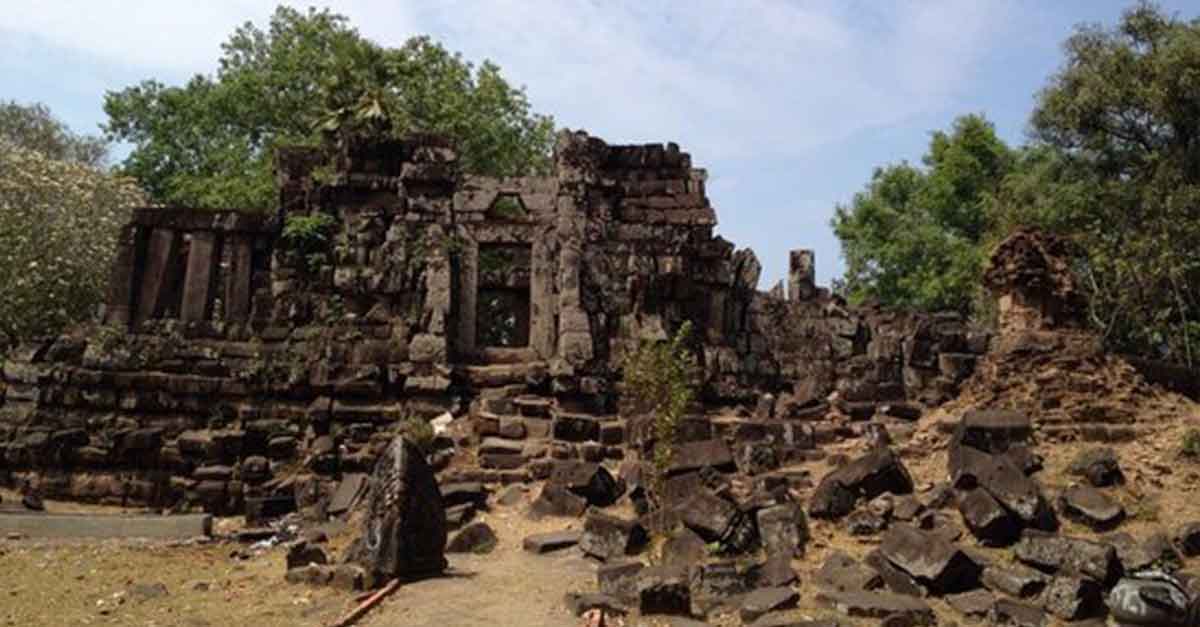Laotian Times‘ own Laotian Eye Takes A Look To Laos’ Pre-Angkorean Treasures Of The Ancient Khmer Empire At The Stone House Huean Hin On a Trip to Savannakhet Province.
The tremendous archaeological treasures of the ancient Khmer Empire have long been celebrated; none more than Angkor Wat by Cambodia’s Siem Reap.
In Laos’, Champassak’s own World Heritage Listed Vat Phou is a prime example of such ancient culture & old world atmosphere.
South East Asia’s tourism boom has seen such ancient sites attract ever increasing numbers of visitors.
As more and more visitors are drawn to these major attractions, demand is also on the rise for the off-the-beaten-track examples of this wonderful and ancient architecture where one can relax with fewer folks competing to take in the site.
Relaxing For More A Millennia Or More
An ideal place to get in touch with this old world in a relaxing fashion is in Laos’ own Savannakhet Province, home to “Heuan Hin” AKA “Phasathin”.
The ancient site is a popular focus of worship for local people since the days of the Hindu-influenced Empire and through the country’s conversion to Buddhism.
“Heun Hin literally means “Stone House”. is believed to have been one of the 121 rest houses constructed by King Jayavarman VII (1181-1218) along the roads which once connected every corner of the Khmer Empire.
“Therefore, it shares similar characteristics with Wat Phou in Champasak and Phimai Temple in Thailand.
Stepping Stones Into Ancient Past
As expected of any place this old, the ancient site has been a focus of myths and legends.
An annual festival is held on a full moon night.
Phasathin festival is traditionally held annually on the full moon of the fourth lunar month (usually around the end of March) with plenty of fun and festivities alongside the sacred.
The house itself measures some 16.5 meters, housing Buddha statues that local folk and visitors pay respects to when they enter.
Time’s Toll A Factor
Alas part of the structure is in ruin with several broken stones lying scattered around but it remains strikingly beautiful.
The structure was made from stone from various locales with most believed sourced from a site to the west about one kilometer away.
Around the Phasathin are several big trees.
Some look so old one could even believe they might date back to the construction of the house, particularly the ever-present frangipani AKA Dok Champa, the national flower of Laos.
The temperature in Savannakhet can get very hot, so these specimens provide very pleasant shade for visitors.
Time For A Renovation?
According to legend, the stone house was renovated over three different periods.
Constructed during the Khmer civilization, its refit was during Sayasetthathirat, the king of the Lao Lanexang Kingdom who helped to popularize Buddhism. It was most recently renovated in the Kingdom’s latter days.
With another renovation expected in the not too distant future, visitors are recommended to visit and take in the atmosphere before the work begins.
Where: Phasathin is located in Ban Heuanhin, Xayphouthong district, 66km from the town of Savannakhet.
How to Get There
From Savannakhet’s Kaysone Phomvihane City, take Route 9B south to Ban Lak 35 and continue a further 3 kilometers before turning right. After 10 kilometers you reach Xaiphoutoung town.
Turn left and follow the Mekong River for about 16 kilometers until you arrive at your destination.
It borders Khammouane Province to the north, Quảng Trị and Thừa Thiên–Huế provinces of Vietnam to the east, Salavan Province to the south, and Nakhon Phanom and Mukdahan provinces of Thailand to the west.
It accounts for 21,774 square kilometers with official figures stating that 60% is covered by forests.



